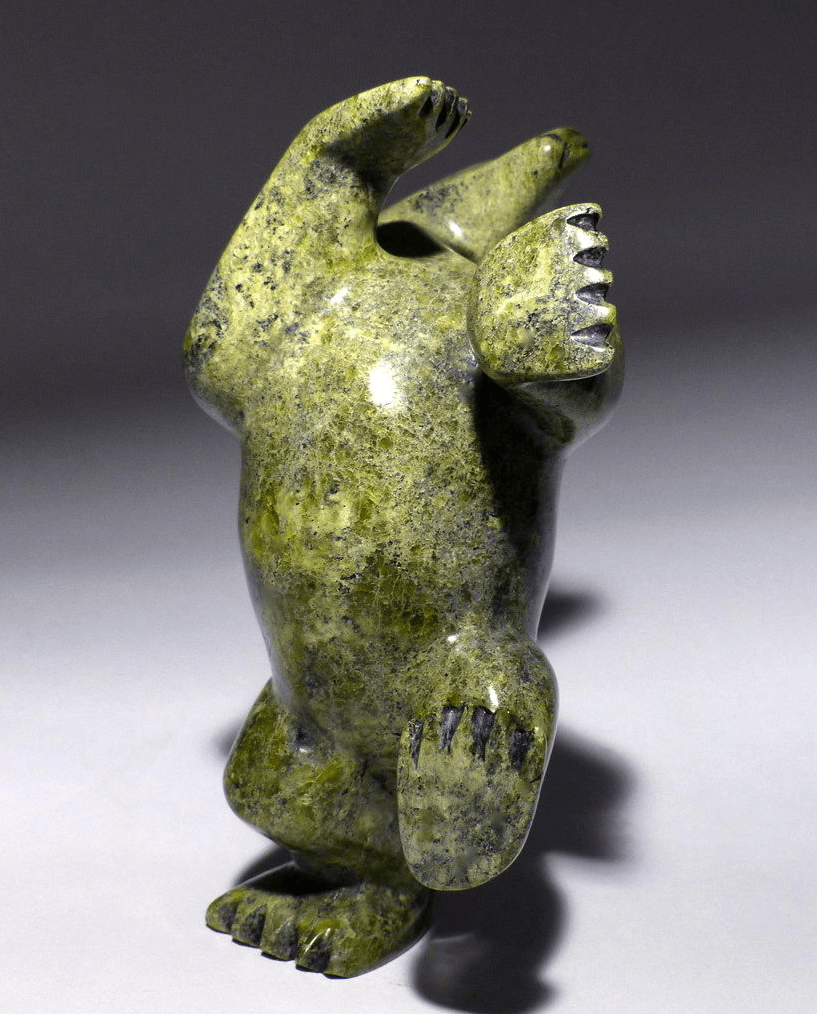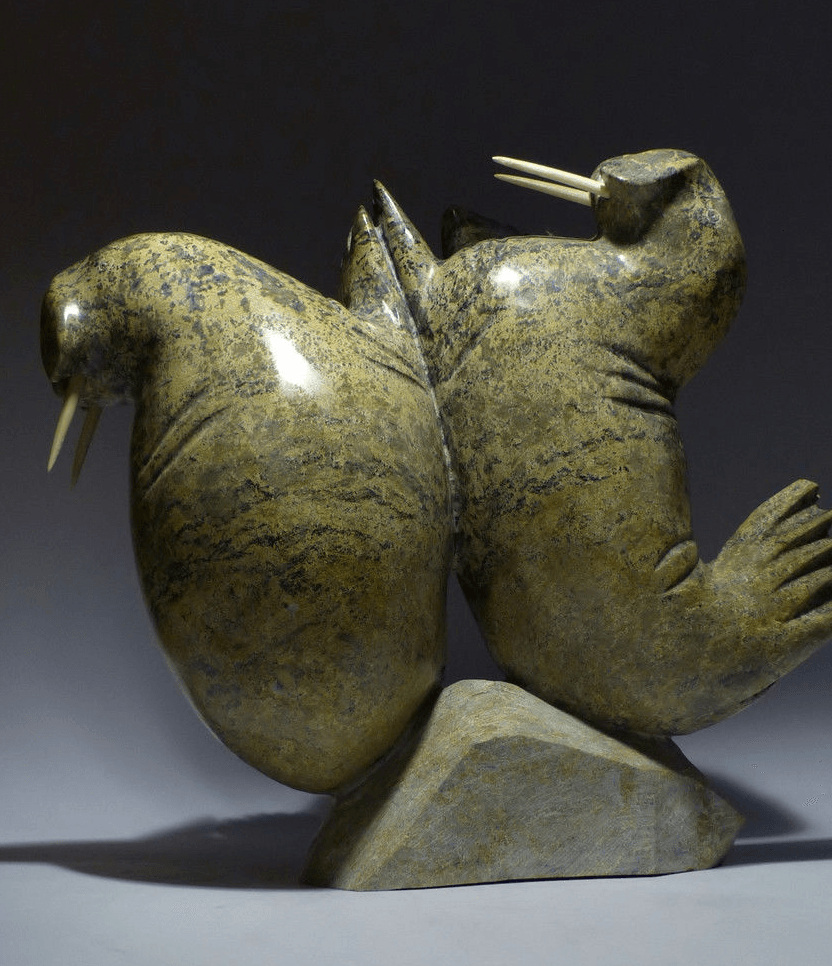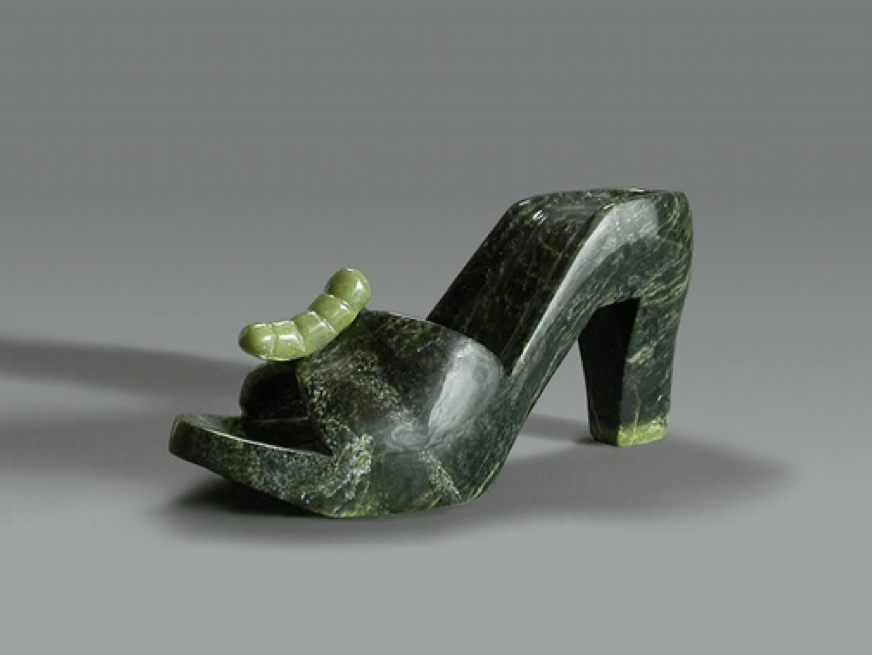

Jamasie Pitseolak is at the forefront of a generation of Inuit artists who are bringing new ideas and sensibilities to the evolving tradition of northern art. Born in 1968 in Cape Dorset on southern Baffin Island, Pitseolak belongs to the first generation of Inuit who grew up in permanent year-round settlements. The son of artists Mark and Ookpik Pitseolak, he began carving when he was 8 or 9, selling his first works to the Hudson’s Bay Company. One of his earliest influences was his grandfather, Peter Pitseolak, a well-known carver and photographer from the Dorset area. Feeling a lack of connection with more traditional themes and unsatisfied with the direction of his work, he began incorporating unconventional modern imagery into his expression in the late 1990s.



…
Like many Inuit sculptors, Pitseolak works in a range of organic and non-organic indigenous materials, including stone, antler and ivory. The similarity ends there. Whereas most Inuit artists produce sculptures from single blocks of stone, Pitseolak works like a collagist, painstakingly assembling his images from individually carved pieces. Equally inventive is his distinctive modern subject matter. Instead of traditional images of hunters and wildlife, Pitseolak tends to represent distinctly modern objects—motorcycles, machinery with moveable parts, guitars and tables (complete with vases). The majority of Pitseolak’s works are marked by a playful charm, a quality reflected also in his sculptures’ titles, many of which are based on puns. That said, some works show a more serious approach, including representations of guns and modern weaponry which it is possible to read as the artist’s engagement with local and global violence.
…

Pitseolak’s work is in many private and public collections, including the Winnipeg Art Gallery and the Canadian Museum of Civilization.
